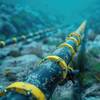Comprehensive oil spill and blast assessment analyses indicate that there is little likelihood of significant pollution or environmental hazards associated with the on-going salvage of the damaged product tanker Castor. The vessel remains about 40 miles off the Spanish port of Cartegena awaiting more favorable weather conditions to attempt a ship to ship transfer of its cargo of 29,500 tons of gasoline. No nearby coastal state has been prepared to offer the vessel's owner and salvors a protected area any closer to shore for the transhipment because of fears that either spilt oil or an explosion could cause unacceptable damage to the environment, shore facilities and citizens.
The risk and consequence analyses have been conducted by EQE International, a subsidiary of the ABS Group of Companies. ABS is the classification society of record for the Castor.
Using worst case scenarios and the most conservative assumptions the spill models indicated that, provided the gasoline is released at or above the water surface, rapid evaporation will prevent the surface hydrocarbon plume from reaching land from the vessel's current location, and the toxic impact
will be very limited.
However the analysis does indicate that, if the gasoline is released from below the surface, should the vessel sink and the cargo escape, the potential pollution is much worse with significant and persistent toxicity to the water column. "The most advantageous scenario, should the cargo be spilt, is for it to be released on or above the water surface to maximize the evaporation and reduce the dissolution of the toxic aromatic hydrocarbons in the water," said Andy Wolford, EQE Senior Consultant who has overseen the analysis.
In a separate analysis carried out by EQE International blast assessment expert Darrell D. Barker, the likelihood of detonation was found to be "highly unlikely" due to the lack of high-energy ignition, the probable fuel-air mixture and the low pressure threshold needed to open the deck structure. "Deflagration, where the reaction front velocity is less than the speed of sound, in a confined area is the most likely explosion scenario," Barker explained. The analysis also indicates that any explosion in one cargo tank would not be expected to propagate extensively to other tanks. "We would not expect any significant damage to structures beyond a 100 m radius," he added.
Featured videos

Inmarsat Enhances Service to Drive Digitalization

Inside the Electrified Truckable Tug

Tracking Foreign Vessels Working in the U.S. Jones Act Market
Subscribe for
Maritime Reporter E-News
Maritime Reporter E-News is the maritime industry's largest circulation and most authoritative ENews Service, delivered to your Email five times per week









